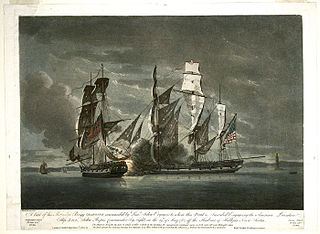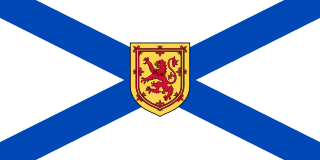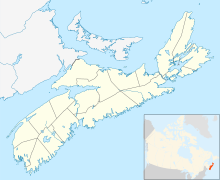
Spryfield is an unincorporated suburban community in Halifax, Nova Scotia, Canada. It was founded about 1770, by Captain William Spry, who purchased land there and established the settlement with the aid of stationed soldiers from the nearby Halifax garrison. In 1783, he sold the property and returned to England. The name "Spryfield" is also sometimes used to refer to the general area of Halifax's South Mainland, which includes a number of communities along the Herring Cove and Purcell's Cove Roads.
Grand Lake can refer to at least 9 different lakes in the Canadian province of Nova Scotia:

The Halifax Regional Municipality has a number of parks and recreation areas in urban and rural settings.

Hall Basin is an Arctic waterway between Hall Land in Greenland to the west and Canada's northernmost island to the east, Ellesmere Island.

Long Lake Provincial Park is located in Halifax, Nova Scotia, Canada. It was initiated in 1981 by then Premier John Buchanan after Halifax's water supply had been shifted from the Spruce Hill/Long Lake/Chain Lakes watershed to the Pockwock Lake watershed near Hammonds Plains. The park itself constitutes the bulk of these former watershed lands - about 2100 hectares. Other portions were deeded to the municipality of Halifax, and the area around the Chain Lakes is still administered by the Halifax Regional Water Commission, since the Chain Lakes are still the official back-up water supply for the city.
Route 349 is collector road in the Canadian province of Nova Scotia.

Musquodoboit Harbour is a natural harbour in Canada on the Eastern Shore of Nova Scotia.

Harrietsfield is a rural residential community in the Western region of the Halifax Regional Municipality in district 18 on the Chebucto Peninsula on the Old Sambro Road 10 kilometers from Downtown Halifax.

West Pennant is a rural community located at the head of Pennant Harbour near Sambro on the Chebucto Peninsula in the Halifax Regional Municipality Nova Scotia on Route 349 West Pennant is an old fishing community that sits on Fawson and Long Coves that open into Pennant Harbour. There are nearby islands: Martin Island, Powers Island, and Pennant Island. Powers Island is privately owned. Once Mi'k Maq hunting and fishing grounds, West Pennant has been occupied by three dominant colonial families since the mid 1700s: the Marriotts, Grays, and Toughs. Just 25 minutes from Halifax, West Pennant is evolving into a suburb of Halifax with many local residents moving in from other parts of Canada and overseas. Until the 1970s most families earned their living fishing, now most families have one or more members who work in Halifax-Dartmouth. West Pennant is also home to cottagers. The local corner store is Mishoo's Right Stop. West Pennant is only a few kilometres from Crystal Crescent Beach Provincial park, a unique beach flanked with granite outcrops and white sand beaches. West Pennant also borders Terrance Bay Wilderness area. Local wildlife include porcupines, deer, coyotes, bobcat, black bear, pheasant, partridge, bald eagles, golden eagles, herring gulls, osprey, beaver, moles, shrew, monarch butterfly (seasonal), raccoon, mink, muskrat, otter, harbour seals, blue jays, american goldfinch, american robin, hummingbirds (seasonal), bobcat, and possibly cougar, and right whale. Fishing is a common occupation and hobby. The dominant species caught in Pennant Harbour are Atlantic Cod, Mackerel, Boston Blue Fish, and further out, Halibut, Swordfish, and Haddock. Squid can be caught off of the government wharf in Sambro during summer nights. There is also a commercial fishery for lobster. Once the poor man's food, lobster is now a local delicacy.

Pennant Point is a rural community located at the head of Pennant Harbour near Sambro on the Chebucto Peninsula in the Halifax Regional Municipality Nova Scotia on Route 349.

Ketch Harbour is a rural fishing and residential community on the Chebucto Peninsula in the Halifax Regional Municipality on the shore of the Atlantic Ocean on Route 349, 17 kilometers from Halifax. It is currently inhabited by people who, for the most part, commute to Halifax and its surrounding areas to work. The community attained ownership of the government wharf in 1999 and since that time have worked to maintain public access to the harbour for the community. Ketch Harbour established a residents association at the same time to ensure its long term sustainability. You can find out more about the Ketch Harbour Area Residents Association (KHARA) at ketchharbour.org.

Sambro Island Lighthouse is a landfall lighthouse located at the entrance to Halifax Harbour, Nova Scotia, on an island near the community of Sambro in the Halifax Regional Municipality. It is the oldest surviving lighthouse in North America and its construction is a National Historic Event.

Sambro Head is a community of the Halifax Regional Municipality Nova Scotia located between Ketch Harbour and Sambro on the Chebucto Peninsula on Nova Scotia Route 349.

Sambro Creek is a community of the Halifax Regional Municipality in the Canadian province of Nova Scotia on the Chebucto Peninsula.
Leiblin Park, Nova Scotia is a residential neighbourhood in Halifax on the Mainland Halifax within the Halifax Regional Municipality, Nova Scotia.
The North West Arm Drive was a 4-lane divided highway that runs entirely in Halifax in the Halifax Regional Municipality connecting Nova Scotia Highway 102 in Clayton Park to Nova Scotia Route 306 in Spryfield. It was renamed to Dunbrack Street on April 29, 2019 by the Halifax Regional Municipality. The highway is a stub of the incomplete "Harbour Drive" project which would have connected Nova Scotia Highway 102 with the Halifax waterfront, via a bridge over the North West Arm and a 6-lane highway through the south end along Water Street and along Barrington past Cogswell. The project was cancelled in the 1970s in the wake of public opposition, but not before North West Arm Drive and the Cogswell Street Interchange were completed.

Cape Kjellman is a cape forming the west extremity of Belitsa Peninsula and marking the east side of the entrance to Charcot Bay, on the west side of Trinity Peninsula, Antarctica. It was first charted by the Swedish Antarctic Expedition, 1901–04, under Otto Nordenskiöld, and named by him, probably for Professor Frans Reinhold Kjellman, a Swedish botanist.

The Battle off Halifax took place on 28 May 1782 during the American Revolutionary War. It involved the American privateer Jack and the 14-gun Royal Naval brig HMS Observer off Halifax, Nova Scotia. Captain David Ropes commanded Jack, and Lieutenant John Crymes commanded Observer. The battle was "a long and severe engagement."
City of Brunswick was a steam cargo ship built in 1921 by Oscar Daniels Shipbuilding Company of Tampa for the United States Shipping Board as part of the wartime shipbuilding program of the Emergency Fleet Corporation (EFC) to restore the nation's Merchant Marine. The freighter ran aground and was wrecked on her first commercial trip to Europe off Halifax in August 1921.











